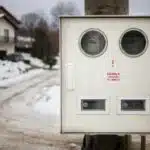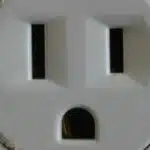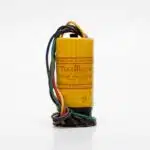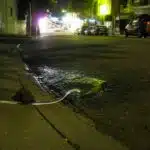As a hot tub installation expert, I have seen many homeowners who are eager to install one in their backyard, but do not know where to start. Installing a hot tub is not as simple as just placing it in your yard and filling it with water. There are several important steps that must be taken to ensure that the installation is safe, efficient, and long-lasting.
In this article, we will provide you with a step-by-step guide on how to install a hot tub. From selecting the right location to wiring the electrical connections, we will cover all aspects of the installation process. By following these guidelines, you can feel confident in installing your own hot tub and enjoy years of relaxation and rejuvenation in the comfort of your own backyard.
Planning And Preparation
To ensure a successful hot tub installation project, it is essential to begin with proper planning and preparation. This involves conducting a thorough site inspection to determine the best location for your hot tub. Factors such as accessibility, privacy, and proximity to power and water sources should be taken into account during this process. It is also important to consider any local zoning laws or building codes that may impact the placement of your hot tub.
Another critical aspect of planning for your hot tub installation is budgeting considerations. The cost of installing a hot tub can vary widely depending on factors such as the size of the unit, the materials used, and any additional features or accessories that are included. It is important to establish a realistic budget beforehand, taking into account not only the initial cost but also ongoing maintenance expenses.
By carefully planning and preparing for your hot tub installation project, you can help ensure a smooth and stress-free process from start to finish. In the next section, we will discuss how to choose the right hot tub for your needs based on factors such as size, style, and features.
Choosing The Right Hot Tub For Your Needs
After carefully planning and preparing for a hot tub installation, it’s time to choose the right one for your needs. There are many hot tub features to consider such as size, shape, seating capacity, jet systems, and additional features like LED lighting and sound systems. It’s important to consider what you will primarily be using the hot tub for; relaxation, therapy or entertainment. This will help determine which features are necessary.
Budget considerations are also an important factor when choosing a hot tub. Prices can range from a few thousand dollars up to tens of thousands of dollars depending on the size and features included. It’s important to set a realistic budget before beginning your search and stick to it. Keep in mind that maintenance costs such as electricity and chemicals will also need to be factored into your budget.
In addition to hot tub features and budget considerations, it’s essential to measure the space where you plan on installing the hot tub and consider accessibility factors such as how close it is to electrical outlets and if there is enough clearance for delivery. Taking accurate measurements can prevent costly mistakes later on. With these factors in mind, you’ll be able to find the perfect hot tub for your needs that fits both your lifestyle and budget.
- Consider what features are most important for your intended use
- Determine a realistic budget before beginning your search
- Take accurate measurements of the installation space
Moving forward with measuring the space and accessibility considerations, it’s important to ensure that everything is properly accounted for before making any purchases or scheduling any deliveries.
Measuring The Space And Accessibility Considerations
As the old adage goes, “measure twice, cut once.” This is especially true when it comes to installing a hot tub. Before you even think about bringing your new hot tub home, you need to measure the space where you plan to install it. Measuring tape accuracy is crucial here, as even a small error can cause big problems down the line.
Take note of any obstructions or obstacles that might make installation difficult. Are there any low-hanging branches or electrical wires that need to be trimmed or moved? Will you need to make any accessibility modifications, such as building a ramp or widening a doorway? These are all important factors to consider before installing your new hot tub.
Once you have accurately measured the space and made any necessary accessibility modifications, it’s time to prepare the site for installation. This involves selecting a firm and level surface for your hot tub and ensuring that there is proper drainage in place. By taking the time to properly prepare the site for installation, you can ensure that your hot tub will function safely and efficiently for years to come.
Preparing The Site For Installation
Accurately measuring the site is essential for a successful hot tub installation. The location of the hot tub should be chosen carefully, taking into account any potential hazards such as underground wiring and drainage systems. The foundation of the hot tub must be dug to an appropriate depth for the model and safety standards. A frame should be constructed to ensure the foundation is level, and the surrounding area must be cleared of debris prior to installation. It is also important to consider the level of support the ground will provide for the hot tub, as well as the access required for servicing and repair. Finally, the foundation must be waterproofed to ensure the hot tub will remain free from moisture damage.
Measuring The Site
When installing a hot tub, measuring the site is a crucial step in preparing for the installation. Site accessibility is one of the primary factors to consider when measuring your hot tub’s installation location. Ensure that there is enough space for the hot tub to fit into and that it has easy access. In addition, you need to ensure that the electrical power source and water supply are easily accessible from this location.
Soil testing is another critical aspect of measuring your installation site. The soil must be strong enough to support the weight of the hot tub and its occupants. Before proceeding with installation, conduct a soil test first. This will help determine whether or not your soil can handle the weight of your hot tub. If you have any doubts about the soil’s suitability, consult with an expert to get advice on how best to proceed.
In conclusion, taking accurate measurements is critical when preparing for the installation of a hot tub. Be sure to measure site accessibility and conduct soil testing before proceeding with installation. Doing so ensures that you avoid any potential issues down the line and enjoy your hot tub safely and comfortably for years to come.
Selecting A Location
Selecting a location for your hot tub is an essential step in preparing the site for installation. Depending on your preference, you can choose to install your hot tub indoors or outdoors. Outdoor installations provide a more natural atmosphere and are perfect for those who prefer soaking while enjoying sunlight and fresh air. On the other hand, indoor installations offer more privacy and protection from weather elements, allowing you to enjoy your hot tub all year round.
When selecting a location for your hot tub, consider factors such as sun exposure and shade. If you prefer to bask in the sun while soaking in your hot tub, select a location that receives ample sunlight throughout the day. However, if you prefer a cooler environment and enjoy soaking during colder months, choose a location that provides enough shade to prevent direct sunlight from heating up the water too much.
Another crucial factor to consider when selecting a location is accessibility. Ensure that there is enough space around the installation area for easy access during maintenance or repairs. Additionally, ensure that there is enough room to accommodate any additional features such as steps or railings that may be necessary for safe entry into the hot tub. Selecting an ideal location for your hot tub not only enhances its functionality but also ensures safety and longevity of use.
Digging The Foundation
As a hot tub installation expert, preparing the site for installation is crucial to ensure that your hot tub functions optimally and lasts long. One essential step in the preparation process is digging the foundation. This involves excavating the ground to create a level surface where you’ll place your hot tub.
To achieve this, you’ll need excavation equipment such as a backhoe or excavator. The type of equipment used will depend on the size and depth of your hot tub and the surrounding area’s accessibility. Additionally, it’s essential to consider soil composition when digging the foundation. Soft or unstable soils may require more excavation work to create a stable base for your hot tub.
Before commencing excavation work, it’s advisable to consult with local authorities and obtain any necessary permits or approvals. This ensures that you comply with local construction regulations and avoid any legal issues down the line. By professionally digging the foundation for your hot tub, you can rest assured that your investment is secure and safe for use by all users.
Creating A Sturdy And Level Foundation
A sturdy foundation is crucial for the installation of a hot tub. The weight of a hot tub, combined with the water and occupants, can put an enormous amount of pressure on the ground beneath it. Therefore, a strong and level foundation is necessary to ensure that your hot tub remains stable and safe.
To create a sturdy foundation, begin by choosing an appropriate location. The area should be flat and level, free from any obstructions such as rocks or tree roots. It’s also essential to ensure that the soil is compacted to prevent settling over time. Once you’ve selected a location, measure out the dimensions of your hot tub and mark them with stakes or spray paint.
Next, excavate the area to a depth of at least 4-6 inches. Remove any grass or other vegetation and level the ground using a tamper or plate compactor. Then, add a layer of crushed stone or gravel to provide drainage and stability. Finally, use a long straight edge to ensure that the surface is perfectly level before placing your hot tub onto it. By following these steps, you’ll have created a solid foundation that will support your hot tub for years to come.
Transition: Now that you have created a sturdy foundation for your hot tub, it’s time to move on to assembling it. In the next section, we will provide guidance on how to assemble your new hot tub safely and efficiently.
Assembling The Hot Tub
Assembling the hot tub is a crucial step in the installation process. The first step is to ensure that all necessary parts are available. This includes checking for any missing pieces and verifying that the hot tub’s panels are undamaged. Once everything is in order, begin by securing the panels using the manufacturer’s instructions.
After securing the panels, it is time to focus on sealing connections. This is an essential step in preventing water leaks. Always use high-quality sealant to ensure that all connections are properly sealed. It is also important to check for any gaps or spaces that may allow water to seep out.
Securing panels and sealing connections may seem like minor details, but they play a significant role in ensuring your hot tub functions correctly. Take your time and double-check each step before moving on to the next one. Once these steps are completed, you can move on to filling and testing your hot tub to ensure everything works as intended.
Filling And Testing The Hot Tub
Now that you have assembled your hot tub, it is time to fill and test it. Before filling the hot tub with water, make sure to check all the components for any leaks or damage. Once everything is confirmed to be in good shape, fill the hot tub with water until it reaches the recommended level.
After filling the hot tub, it is important to test all the equipment thoroughly. Turn on each jet and ensure that they are working correctly. Check if the heater and pump are functioning properly as well. Testing equipment will help identify any issues before starting to use the hot tub regularly.
Water chemistry is an essential aspect of maintaining a safe and hygienic hot tub experience. After testing your equipment, add chemicals such as chlorine or bromine according to the manufacturer’s instructions. Monitor chemical levels regularly using a test kit and adjust as needed. Proper maintenance of water chemistry will prevent any potential health hazards caused by contaminated water.
- Regularly monitor chemical levels using a test kit
- Add chemicals according to manufacturer’s instructions
- Adjust chemical levels as needed
Now that your hot tub has been filled, tested, and chemically balanced, it is time to move onto electrical requirements and wiring. Safety should always be a top priority when dealing with electricity around water. It is crucial to follow all local codes and regulations when installing electrical components for your hot tub. Failure to do so can result in serious injury or even death.
Electrical Requirements And Wiring
Important considerations when installing a hot tub include electrical requirements and wiring. Proper installation of the electrical components is critical for the safety and functionality of your hot tub. Before beginning any wiring work, it is essential to consult with a licensed electrician to ensure that all local codes and regulations are followed.
Grounding requirements must be met to prevent electrical shock hazards. The hot tub must be connected to a grounding system that meets national and local codes. This involves running an equipment grounding conductor from the main electrical panel to the hot tub’s disconnect box. It is crucial to ensure that all connections are tight and secure, with no exposed wires or loose connections.
Circuit breakers must also be installed in compliance with local codes. A GFCI (ground fault circuit interrupter) breaker is required by most local codes, which will shut off power if there is a problem with the electrical system. The breaker should be rated for the size of your hot tub’s motor and wired correctly according to the manufacturer’s instructions. With proper grounding and circuit breaker installation, you can safely enjoy your hot tub without worrying about electrical hazards.
Next, we will discuss how to install the GFCI breaker in more detail. This step is critical as it ensures that your hot tub’s electrical system is safe and up to code. By following these steps carefully, you can safeguard yourself against potential electrocution hazards while enjoying your hot tub’s relaxing benefits.
Installing The Gfci
Testing the GFCI is a crucial step when installing a hot tub to ensure proper functionality and safety. Connecting the GFCI requires a thorough understanding of the hot tub’s electrical system. Ensuring proper installation of the GFCI involves verifying the correct wiring and continuity. Once the testing and connecting are completed, the GFCI should be ready for use.
Testing The Gfci
Picture yourself all set up for a relaxing soak in your new hot tub. The water is warm, the jets are on, and you’re ready to unwind after a long day. However, before jumping in, it’s important to ensure that your hot tub is safe and properly installed. One crucial step in this process is testing the GFCI.
Testing procedures for a GFCI involve pressing the “test” button on the device to simulate an electrical fault. This should cause the GFCI to trip, cutting off power to the hot tub. If this happens, then you know that the device is functioning properly and providing adequate protection against electric shock. It’s recommended that you test your GFCI at least once a month to make sure it’s still working as expected.
GFCI maintenance is also essential for keeping your hot tub safe and functional. This includes regular cleaning and inspection of the device itself, as well as ensuring that any outlets or extension cords used are also protected by a GFCI. By taking these steps, you can have peace of mind knowing that your hot tub is properly installed and protected against electrical hazards.
Connecting The Gfci
When installing a hot tub, it’s important to connect the GFCI properly to ensure that it provides adequate protection against electrical hazards. There are different wiring options available, such as direct wiring or using a cord and plug connection. Direct wiring involves running wires from the main circuit panel to the GFCI box, while a cord and plug connection allows for easier disconnection in case of maintenance or repairs.
Regardless of the wiring option chosen, there are some GFCI safety precautions that should be followed during installation. First, make sure that the power is turned off before beginning any work on the electrical components. This can be done by turning off the circuit breaker for that specific area of the house. Additionally, all connections should be made according to local electrical codes and manufacturer instructions.
Once the GFCI is properly connected and installed, it’s important to test it regularly to ensure that it’s functioning correctly. As mentioned previously, this can be done by pressing the ‘test’ button on the device to simulate an electrical fault. If the device trips as expected, then you know that it’s providing adequate protection against electric shock. By following proper installation procedures and regular testing, hot tub owners can enjoy their relaxing soak with peace of mind knowing that their GFCI is keeping them safe from potential electrical hazards.
Plumbing Considerations
Plumbing Considerations:
After selecting the perfect location for your hot tub, you need to consider the plumbing requirements. First and foremost, drainage considerations are essential to avoid any water accumulation around or under the hot tub. You must ensure that the area has adequate drainage to prevent water buildup and potential damage to the hot tub’s structure. Additionally, it is recommended to have a nearby floor drain or sump pump that can efficiently handle any accidental spills or leaks.
Next, you need to think about water supply options. Depending on your hot tub model, you may need a single or dual water supply line. A single line will typically suffice if your hot tub only requires one source of water input. However, if it requires more than one input source, a dual-line installation is necessary. In either case, it is crucial to consult with a licensed plumber to determine the best method of connecting the hot tub to your existing or new water supply system.
Proper plumbing installation is critical in ensuring that your hot tub functions correctly and lasts for years without any issues. By taking into account drainage considerations and water supply options, you can create a safe environment for your hot tub while minimizing potential plumbing problems down the road.
As we move forward in our installation process, we now turn our attention towards covering and securing the hot tub into place.
Covering And Securing The Hot Tub
Accurately measuring the area of the hot tub is essential for successful installation. The surface beneath the hot tub must be prepared properly to ensure a secure base. After the hot tub is in place, the cover should be secured using straps and buckles to protect it from the elements. The straps should be secured to the sides of the tub and adjusted accordingly for a snug fit. The buckles should be placed at the corners of the cover and tightened with a ratchet. The cover should be inspected regularly for any signs of wear and tear and replaced as needed.
Measuring The Area
Accurately measuring the area where the hot tub will be placed is crucial to ensure a successful installation. As an expert in hot tub installation, I understand the importance of proper site preparation requirements and using a measuring tape with precision. It can be frustrating for homeowners who have already purchased a hot tub to find out that it won’t fit in their desired location due to incorrect measurements.
To measure the area, start by determining where you want your hot tub to be located. Make sure it is on level ground and at least 10 feet away from any overhead power lines. Using a measuring tape, measure the length and width of the area where the hot tub will sit, adding an additional 2-3 feet around all sides for easy accessibility during maintenance. Accuracy is key, so double-check your measurements before moving forward with any further steps.
Once you have measured the area, make sure that it meets all site preparation requirements such as adequate drainage and electrical access points. As an installation expert, I strongly advise homeowners to consult with a professional electrician and plumber to ensure everything is up to code before proceeding with any installation work. By taking these necessary steps, homeowners can rest assured that their new hot tub will be safely secured in its designated location for years of relaxation enjoyment.
Preparing The Surface
After measuring and preparing the site for a hot tub, the next crucial step is preparing the surface where the hot tub will sit. This involves ensuring that the surface is level, stable, and capable of supporting the weight of the hot tub and its occupants. It’s important to note that an uneven surface can cause damage to your hot tub and even pose a safety hazard.
To prepare the surface, start by removing any grass or debris from the area. Next, use a leveling tool such as a long straight board or laser level to check for any uneven areas. If there are low spots, fill them in with sand or gravel until you achieve a level surface. Additionally, waterproofing options such as concrete pads or rubber mats can be used to protect the hot tub’s bottom from moisture damage.
Once you have achieved a level and stable surface, it’s time to secure and cover your hot tub properly. Securing your hot tub ensures that it stays in place during use and prevents accidents caused by movement or instability. Covering your hot tub protects it from weather elements such as rain, snow, or direct sunlight – which can cause damage over time. To ensure proper covering and securing of your hot tub, consider investing in high-quality covers with tie-downs that fit snugly around your hot tub.
Securing The Cover
After ensuring that the surface where the hot tub will sit is level and stable, it’s time to secure and cover your hot tub properly. Securing your hot tub is crucial to ensure its safety during use and prevent accidents caused by movement or instability. One way to do this is by installing anchor straps, which attach the base of the hot tub to a solid structure such as a concrete pad or deck. This method prevents the hot tub from shifting or tipping over.
Covering your hot tub also plays a vital role in its maintenance and longevity. There are various types of covers available in the market, including hard covers and soft covers. Hard covers provide better insulation, durability, and protection from weather elements but are heavier and more expensive than soft covers. Soft covers are lightweight, cheaper, and easier to install but offer less insulation and protection than hard covers.
Winterizing options should also be considered when covering your hot tub during colder months. Winterizing involves draining the water from the hot tub’s plumbing system, adding antifreeze, cleaning and drying the shell thoroughly, removing any detachable parts such as filters or jets before covering it with an insulated cover. This process helps protect your hot tub from damage caused by freezing temperatures.
In conclusion, securing and covering your hot tub properly is essential for its safety, maintenance, and longevity. Investing in high-quality covers with tie-downs that fit snugly around your hot tub can provide added protection against weather elements while anchor straps can keep it securely in place during use. Additionally, winterizing options should be considered when storing your hot tub during colder months for added protection against freezing temperatures.
Routine Maintenance And Care
One example of the importance of routine maintenance and care for hot tubs is a scenario where a homeowner neglects to check and adjust the chemical balance of their hot tub. Over time, this can result in cloudy or discolored water, unpleasant odors, and even skin irritation for those who use the hot tub. This demonstrates how important it is to regularly test and maintain your hot tub’s chemical balance.
To properly care for your hot tub, there are several key steps to follow. First, make sure to regularly check and adjust the chemical balance of the water using test strips or a testing kit. This will help keep the water clean and clear while also preventing any damage to the hot tub’s components. Second, ensure that you have a reliable water filtration system in place. A good filtration system will remove debris, bacteria, and other contaminants from the water, keeping it safe and healthy for you to use.
Finally, it’s important to establish a regular cleaning schedule for your hot tub. This may include draining and refilling the water every few months as well as scrubbing down the interior surfaces of the hot tub with a non-abrasive cleaner. By following these steps and staying on top of routine maintenance tasks like checking chemical balance and maintaining water filtration, you can help ensure that your hot tub stays in great condition for years to come.
Moving forward into troubleshooting common issues with your hot tub, it’s important to understand how certain problems can arise if routine maintenance is not properly performed.
Troubleshooting Common Issues
After installing a hot tub, it is essential to perform regular maintenance checks to ensure its proper functioning. One of the most common issues you may encounter with your hot tub is leaks. Leaks can be caused by a variety of factors, such as damaged pump seals or cracked pipes. To identify and repair leaks in your hot tub, start by turning off the power and draining the water. Then, inspect all the components for visible damage or wear and tear. If you find any damaged parts, replace them promptly to prevent further leaks.
Another issue that may arise with your hot tub is problems with its heater. When the heater malfunctions, it can cause the water temperature to fluctuate or not heat up at all. In such cases, check whether there are any loose connections or broken wires in the heater element. If you find any damaged parts, replace them immediately to avoid further complications. It’s also important to regularly clean your hot tub’s filter and ensure that it’s properly installed and functioning.
In conclusion, addressing common issues such as repairing leaks and fixing heater problems are crucial steps in maintaining your hot tub’s optimal performance. Regular maintenance checks will help identify these issues before they escalate into more significant problems that can lead to costly repairs or replacements. By following these simple troubleshooting tips, you’ll be able to enjoy relaxing soaks in your hot tub for years to come.
Moving forward, safety should always be a top priority when using a hot tub. While they offer many benefits, they also pose some risks if not used correctly. Therefore, it’s essential to follow certain safety tips when using your hot tub to ensure that everyone stays safe while enjoying its benefits.
Safety Tips For Hot Tub Use
Now that you have successfully troubleshooted common issues that may arise during hot tub installation, it is time to focus on ensuring the safety of your hot tub. Hot tub maintenance is crucial in keeping your hot tub safe for use. It is recommended to clean and sanitize your hot tub regularly to prevent the accumulation of bacteria and other harmful organisms. Failure to properly maintain your hot tub can result in skin irritation, rashes, and even serious infections.
Water safety is also a top priority when it comes to owning a hot tub. Before using your new hot tub, it is important to test the pH levels and ensure they fall within the recommended range of 7.2-7.8. This helps prevent skin irritation and equipment damage. Additionally, never allow anyone who has an open wound or illness into the hot tub as this may contaminate the water.
In conclusion, owning a hot tub requires proper maintenance and attention to detail when it comes to water safety. By following these guidelines, you can ensure that you and your loved ones enjoy a clean and safe experience every time you use your new hot tub!
Enjoying Your New Hot Tub!
Picture yourself soaking in the warm, steaming water of your brand-new hot tub. After all the hard work and preparation, it’s time to relax and enjoy the fruits of your labor. But beyond just relaxation, did you know that using a hot tub can have numerous health benefits? From reducing stress and relieving muscle tension to improving sleep quality, soaking in a hot tub can provide physical and mental wellness benefits.
To enhance your hot tub experience, consider adding some accessories such as steps for easy access, a cover lifter for convenience, or even a sound system for entertainment. And don’t forget about maintenance – keeping your hot tub clean and well-maintained will ensure its longevity and optimal performance.
As you sit back and unwind in your new hot tub, take a moment to appreciate the investment you’ve made not only in your home but also in your own well-being. With regular use and proper care, your hot tub can provide years of relaxation and health benefits for you and your loved ones.
- Soothing aromatherapy scents can elevate the relaxing atmosphere
- Floating drink holders provide convenience while enjoying refreshments
- Color-changing LED lights add ambiance to any evening soak
- Aromatherapy diffusers can enhance the healing properties of essential oils.
Conclusion
The installation of a hot tub may seem like a daunting task, but with proper planning and preparation, it can be a smooth process. A crucial step in the installation process is choosing the right hot tub for your needs, taking into consideration factors such as size, seating capacity, and features. Measuring the space and ensuring accessibility is also important to avoid any potential complications during installation.
Preparing the site for installation involves creating a sturdy and level foundation to support the weight of the hot tub. Routine maintenance and care are essential to keep your hot tub functioning properly and prolong its lifespan. Troubleshooting common issues can save time and money in the long run. Safety tips for hot tub use must be followed to ensure that you and your loved ones enjoy your new hot tub without any accidents.
In conclusion, installing a hot tub requires careful planning, preparation, and attention to detail but can provide an enjoyable addition to your home. As an expert in hot tub installations, I urge you to take all necessary precautions during the installation process and follow proper maintenance guidelines to maximize your investment. In the words of Confucius, “Success depends upon previous preparation, and without such preparation there is sure to be failure.” So prepare well and enjoy your new hot tub!
Image Credits
- “Chili Hot Tub” by The Rocketeer (featured)





























